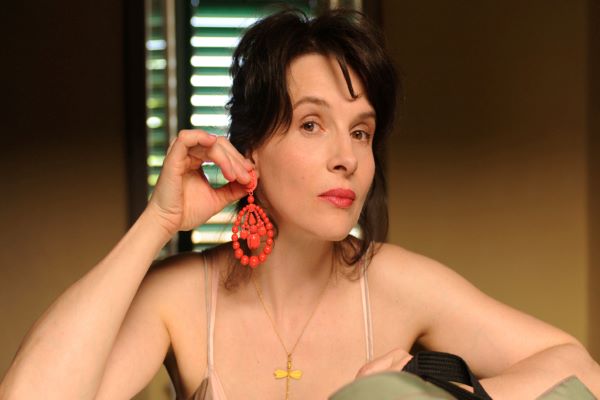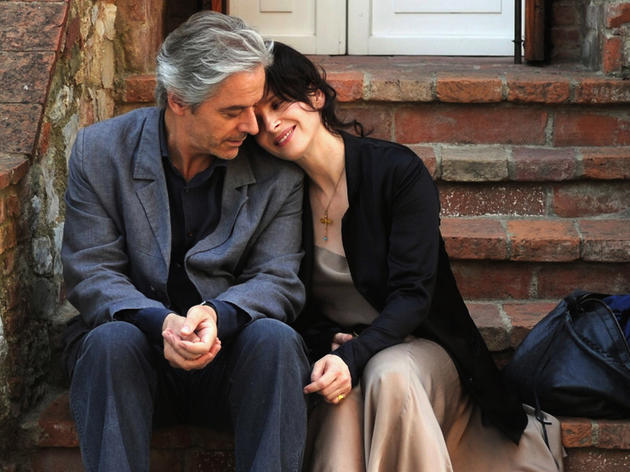Abbas Kiarostami’s Certified Copy certifies the copies and strongly argues that even the originals are also copies. Nothing in this world is absolutely original. However, the copies are not less standard. There are times when originals are not accessible, copies fulfill our needs. In this film, Kiarostami has woven a story between a British art historian and Author and a French antique dealer which changes its direction and turns into a love story a little later. Even this love story is not original and merely a copy of the dealer’s own married life. However, it is not less in excellence rather full of emotions. Most of the time, human lives are centered around copies that serve basic human needs. In Certified Copy, Kiarostami highlights the significance of copies in human lives.
The film starts with British author and art historian James Miller (William Shimell) delivering a lecture at the publishing event of his new book titled Certified Copy in Tuscany, Italy. He has argued in his book that nothing in art is absolutely original, and even the originals are merely the replica of another artwork. A copy itself is original. Copies are not less in excellence. An unnamed French antique dealer (Juliette Binoche) attends the event with her adolescent son to get her purchased copies signed by Miller. However, she keeps her phone number with Miller’s translator and leaves the event midway as her son keeps disturbing her during the event. Her son tells her that she is interested in a romantic relationship with Miller, which she denies.

Miller meets the dealer at her shop later on that day. He proposes an aimless drive in the countryside of Tuscany. While driving, Miller signs the copies that the dealer has bought and they discuss originality and authenticity. He argues that even Mona Lisa is a copy of the lady who modeled for its creation in real or imagined. A little later, they visit a museum to see a few famous copies. As Miller has already finished the book, he is no more interested to see any more copy and they leave the museum. Then, they visit a cafe where the lady owner assumes them a married couple. When Miller returns to the cafe after a quick phone call, the dealer informs him about the owner’s assumption. None of them find any problem with that assumption. The story now turns into a romantic love story.
Once they leave the cafe, they start behaving like a married couple, referring to her son as “our son”, and speaking both in English and French. The dealer complains that Miller was sleeping during their 15th wedding anniversary night and constant travel has always kept him busy and away from her. While traveling through the town, they meet an old couple and discuss with them the interpretation of a nearby statue. The old man tells Miller that even a small gesture of affection can repair his relationship with his wife. A little later, they enter a restaurant and the lady goes to the bathroom. There, she applies lipstick and puts on earrings. When she returns, Miller is seen quarreling with the waiter over the quality of the wine. They start fighting again and he leaves the restaurant. Next, they pass by a Church and the lady enters it without him to change her bra. Then, they visit the hotel where their marriage ceremony took place. The lady reminisces about the fond memories of their wedding night, though Miller does not remember any details. The lady suggests that they should embrace each other irrespective of their differences. Without a partner, life is lonely. Now Miller has to leave to catch the train at 9 p.m. He goes to the bathroom and looks into the mirror. When the church bell begins to ring, he leaves the bathroom.
People generally look down upon duplicates in art. There has always been an impression that originals are better in quality. So, they get engaged in an endless search for the originals. Kiarostami strongly argues against the concept of originality. Miller points out that even Mona Lisa is also a copy of the woman who modeled for its creation. Even humans are merely the genetic replica of their predecessors. Neither the art world nor human lives are absolutely original. Even the sensuous love story between Miller and the lady is not original. In real life, he is not her husband. But, that does not diminish the feelings they share with each other. Even if only for a day, Miller and the lady make a perfect couple. When reality is inaccessible, the duplicates suffice basic human needs and emotions. Two humans fall in love when they are unknown to each other. Love blossoms in the midst of anonymity. The lovers keep discovering one another. The love ends when they know themselves fully. There is nothing more to discover. Life becomes mundane and obscure. In Certified Copy, Kiarostami has drawn parallels between the art world and human life.
Certified Copy is filled with brilliant acting by both Juliette Binoche and William Shimell. In the film, Binoche is a sensitive, lonely, romantic, lovable, and strong woman. She is neglected and craves love and affection. Viewers get attached to her acting. This is the first film role of baritone opera singer William Shimell. His portrayal of James Miller is elegant, meaningful, witty, and overall intellectual. Luca Bigazzi’s camera beautifully captured the scenic beauty of the Tuscany countryside. The film was nominated for the prestigious Palme d’Or at the 2010 Cannes Film Festival where Juliette Binoche won the Best Actress award.
